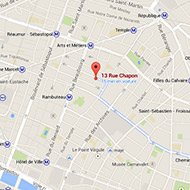The Isabelle Gounod Gallery is particularly pleased to welcome Glen Baxter for his first personal exhibition at the gallery.
Explorers wearing pith helmets, students wearing blazers, tea drinkers and cricket players, cowboys and scouts are the everyday heroes of the captioned drawings that have made him famous. Inspired by the pulp fiction consumed by young people in the 1930s and 1940s, these characters are placed in absurd, extravagant situations in the midst of which they seem to retain a very British stiff upper lip: boy scouts recite Raymond Roussel by a camp fire, a sheriff catches cowboy Perec red-handed as he tries to steal an E, pilloried first-time offenders wearing blazers are sentenced to attend a symposium on Houellebecq; children in dressing gowns shine a lantern on their father?s almost industrial reproduction of a Mondrian painting...
Around 1970, Glen Baxter created a system consisting in pairing drawings with meticulously handwritten captions, which would subsequently become his usual form of expression. His drawings are rendered in Indian ink and crayon. Figures are always lined with ink, and the colour fills them entirely. Rigid postures, expressionless faces, absent shadows, strictly delimited backgrounds: his drawings are very rigorously constructed, casting off stylistic pathos.
This master of nonsense knows exactly where to place details that the eye will often discover belatedly and that change the whole meaning of the scene. If you pay attention, there is always a touch of incongruity in the relations that the English artist establishes between his texts and his images. The nonsense and laughter that follow are often due to the contrast between images peppered with oddities and impassive captions. ?It only takes an arrow, a hennin, a fire in the background for normality to suddenly flip over and become absurd.?
?The Surrealists called it the ?frisson?, that sudden feeling that the ground is giving way, that you have gone too fast, that you have made a mistake. (...) It?s a fleeting but very strong feeling, as if your mind were momentarily losing its balance. This is precisely what I try to trigger in those who look at my drawings. I?ve always loved these rips in reality, these light dizzy spells.?1
Glen Baxter likes to mention the following inspirations: Lewis Carroll, the novel ?What a life?2, which Raymond Queneau considered an early instance of Surrealism, Buffalo Bill, Tom Mix, George Herriman (the creator of ?Krazy Kat?), and those he admires most: Jarry, Queneau, Raymond Roussel, Beckett, Magritte, De Chirico, Desnos, Man Ray...
?Neither illustrated aphorisms nor mere captioned drawings, the works of Glen Baxter simultaneously play on the disjunction and interdependence of sugary images and texts to provoke laughter. For this Englishman, the whole is greater than the sum of its parts.? 3
1 Stéphane Jarno, « Les dadas du Colonel », Télérama no. 3077, 2009
2 E.V. Lucas, George Morrow, What a life!: an autobiography, 1911, London, Methuen & Co Ltd
3 Sarah Ihler-Meyer, Artpress no. 395, December 2012
Glen Baxter was born in 1944 in Leeds (Great Britain), where he attended the School of Fine Art (between 1960 and 1965). A painter and cartoonist, he initially became known for his graphic work, first in the United States and then in Great Britain, the Netherlands, Northern Europe, Australia, Japan and of course France, where his work is regularly exhibited. Prince Charles himself, the Monty Pythons? John Cleese, Salman Rushdie, and Tonino Benaquista are among ?Colonel Baxter??s many followers...


